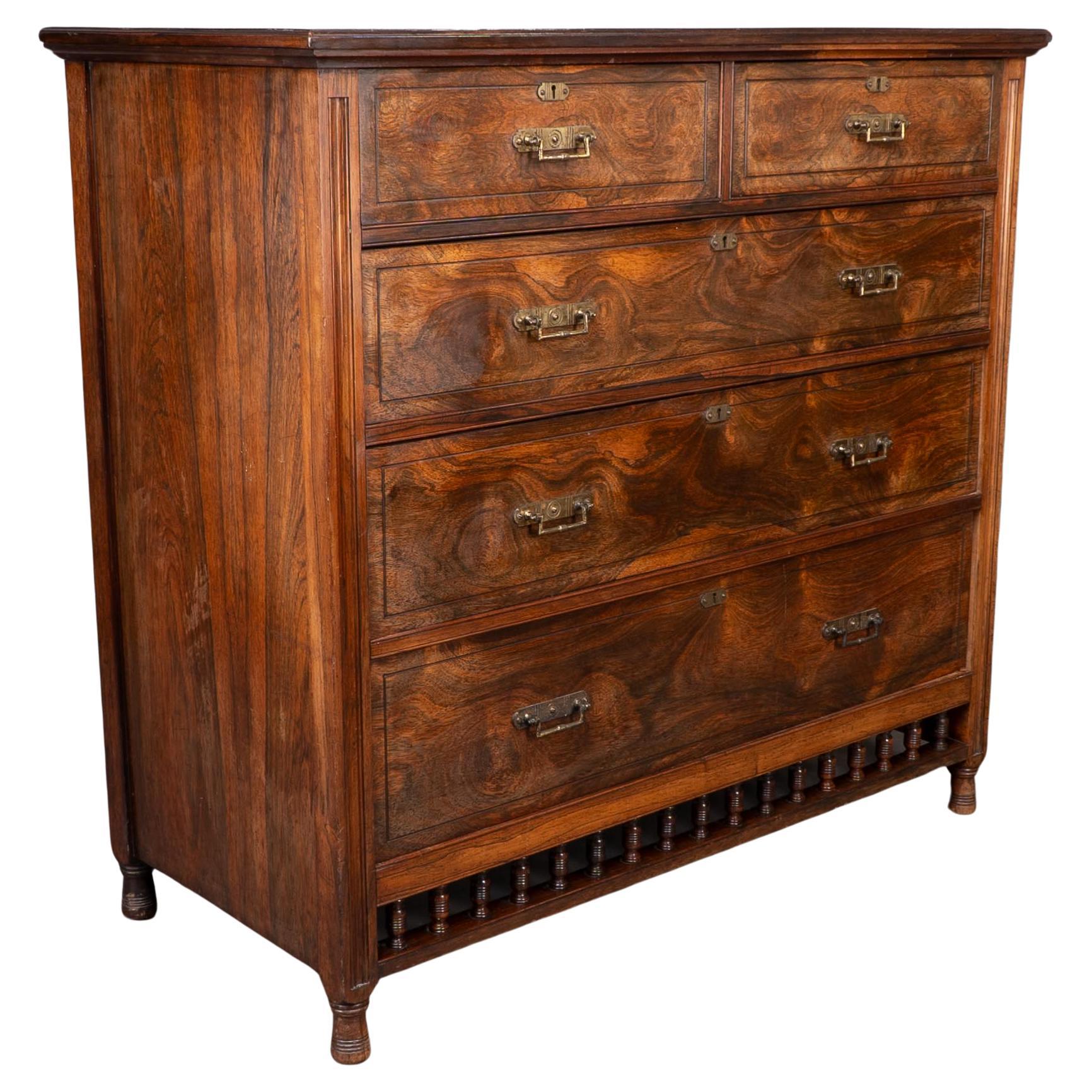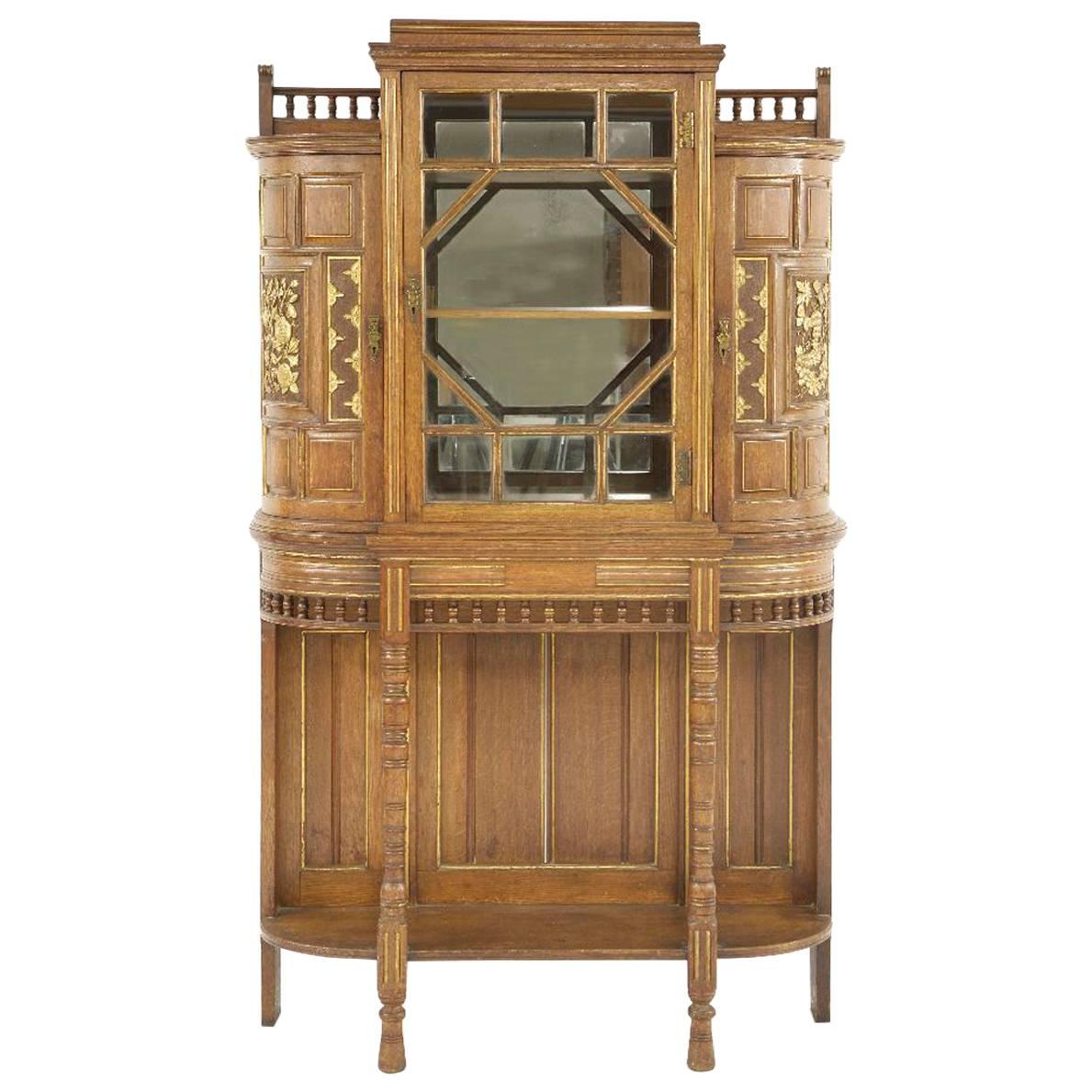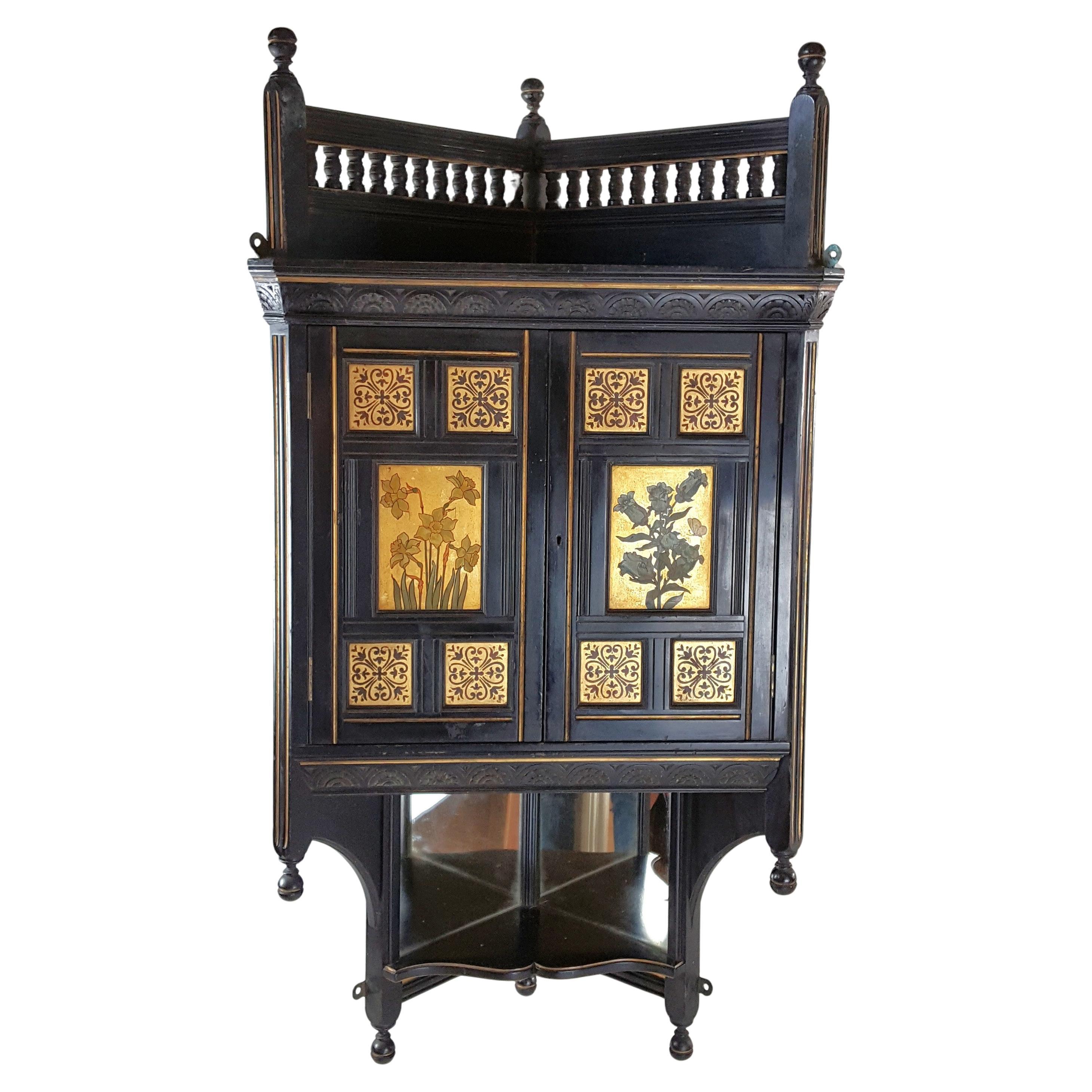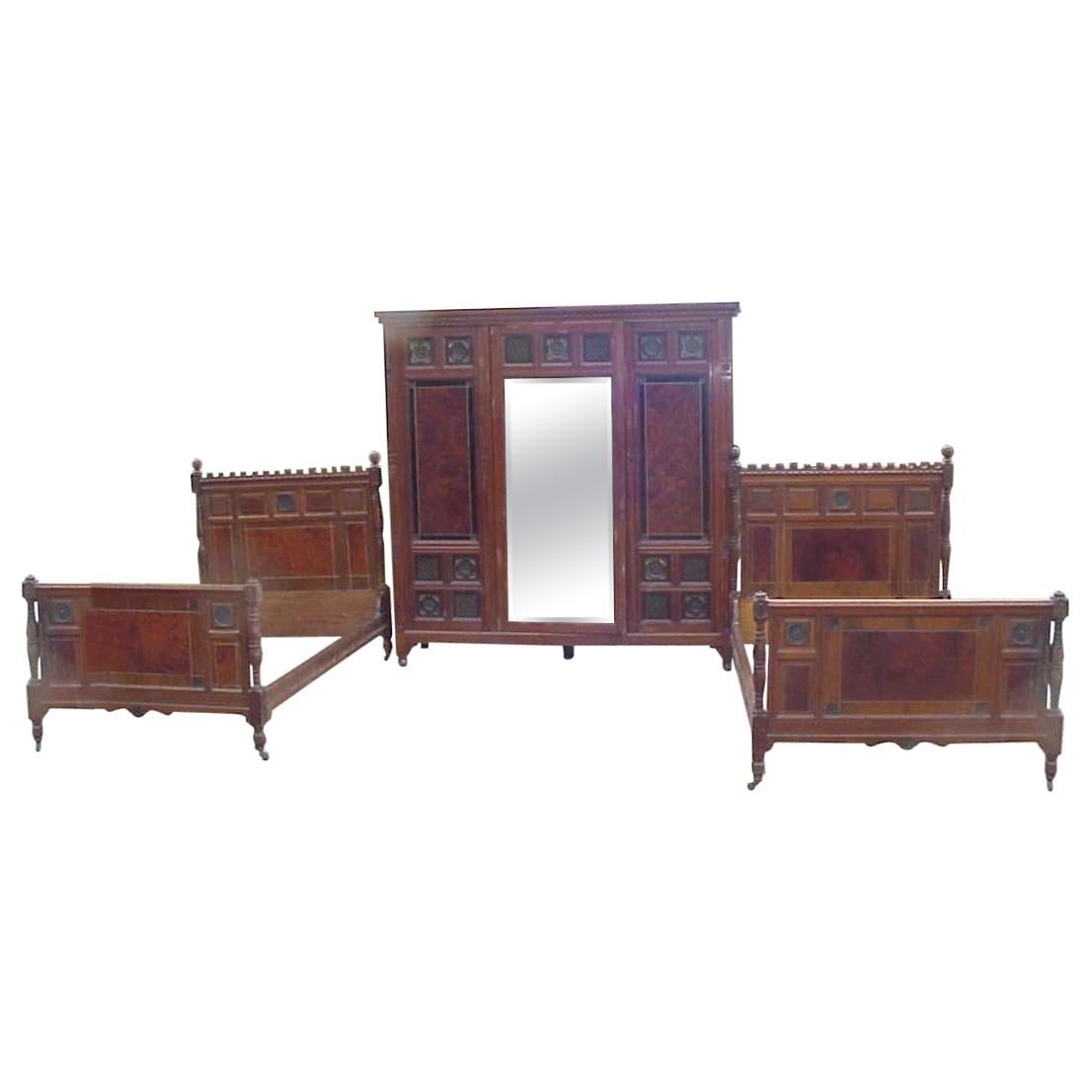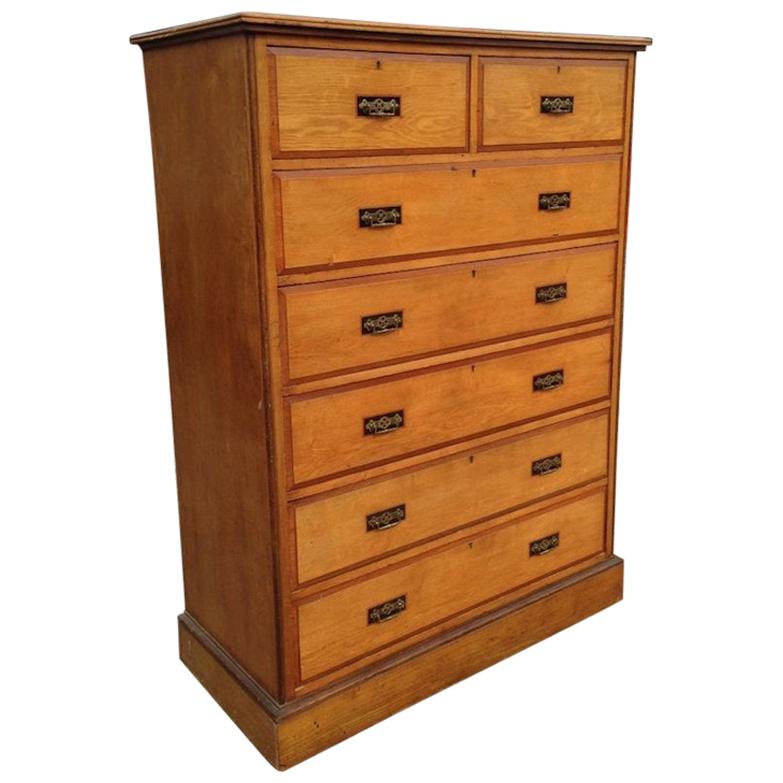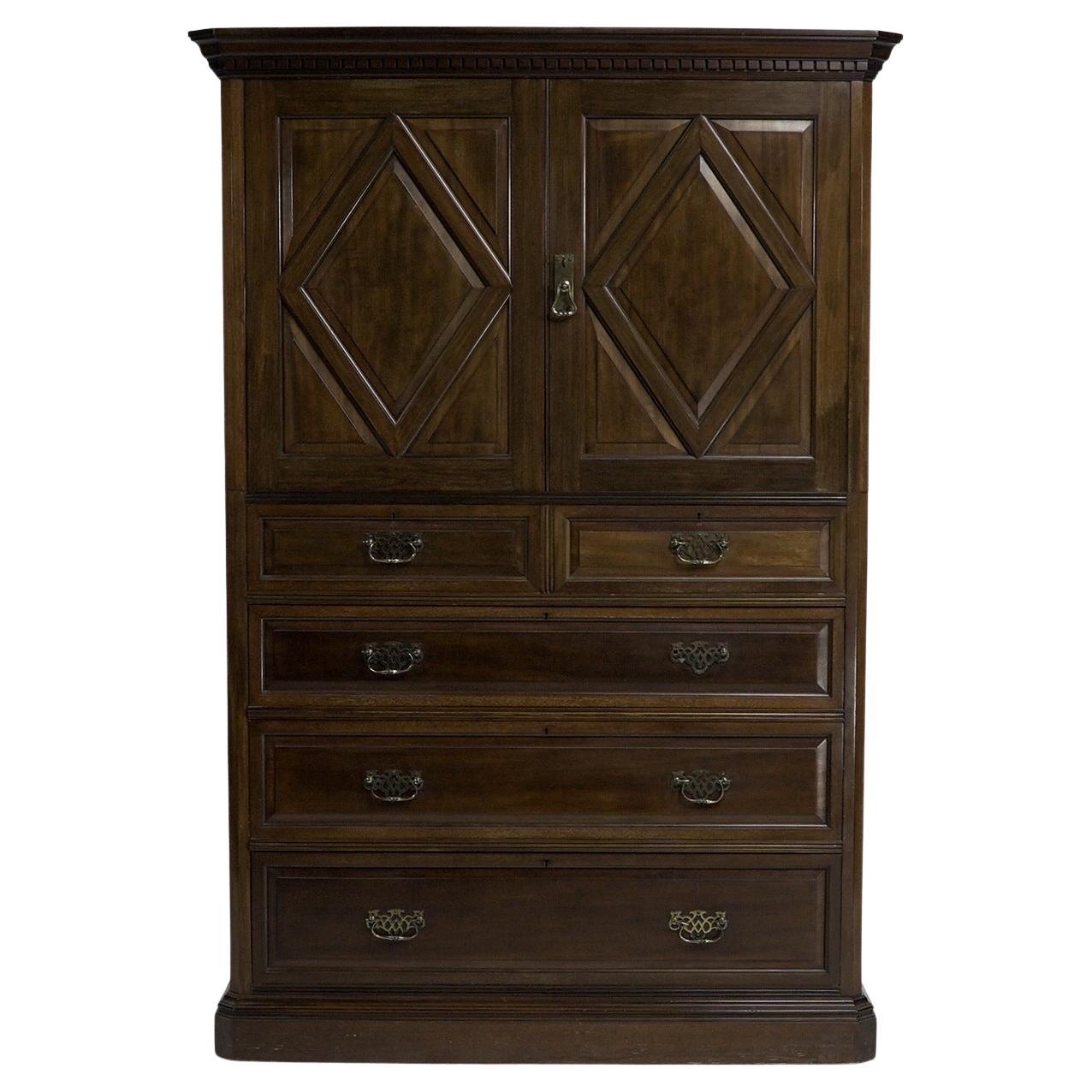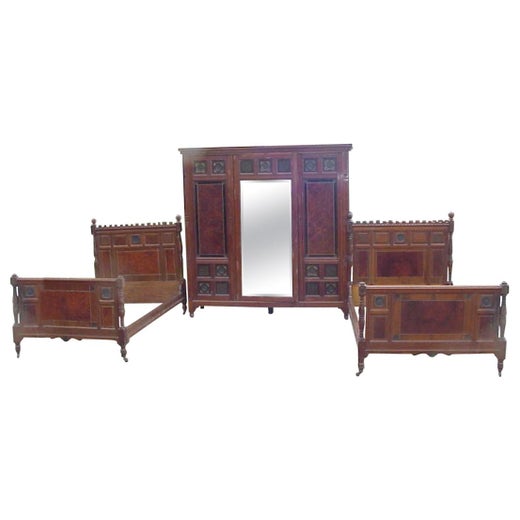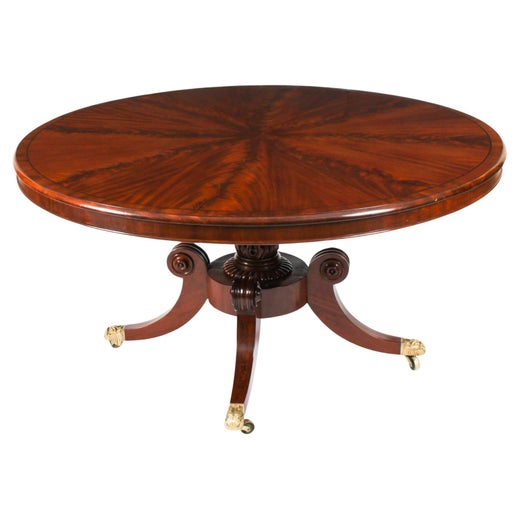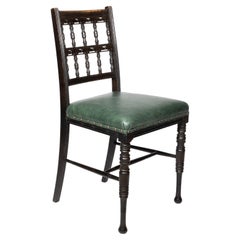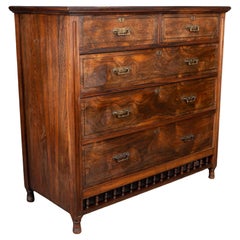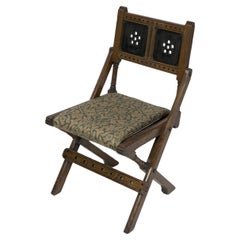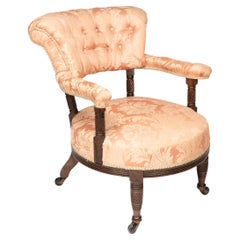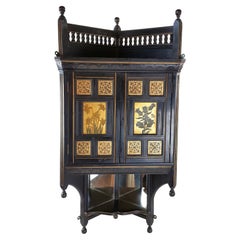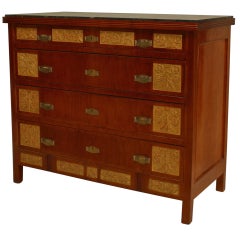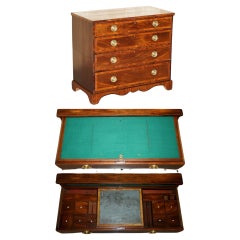Bruce Talbert. Gillows & Co a Rare Aesthetic Movement Walnut Chest of Drawers
About the Item
- Creator:Bruce James Talbert (Designer),Gillows of Lancaster & London (Cabinetmaker)
- Dimensions:Height: 41.5 in (105.41 cm)Width: 44.5 in (113.03 cm)Depth: 22.5 in (57.15 cm)
- Style:Aesthetic Movement (Of the Period)
- Materials and Techniques:
- Place of Origin:
- Period:
- Date of Manufacture:1880
- Condition:Wear consistent with age and use. Some marks to the drawer top as shown in the images apart from that a good original chest.
- Seller Location:London, GB
- Reference Number:Seller: PV0047631stDibs: LU224338651803
Bruce James Talbert
Bruce James Talbert was one of the most noteworthy furniture designers of the 19th century. The Scottish architect, draftsman and designer created stunning pieces of Gothic furniture and his landmark book, Gothic Forms Applied To Furniture, Metalwork and Decoration For Domestic Purposes, was influential on the Gothic Revival movement both in Europe and North America.
Born in 1838, Talbert started his career as an apprentice to a woodcarver in Dundee, Scotland. When he was 18 years old, he was briefly employed by the architect Charles Edward. He subsequently had several successful partnerships with design firms and manufacturers.
In 1862, Talbert moved to Manchester, England, where he was hired to design furniture for Doveston, Bird & Hull. Later that year, British metalworker Francis Skidmore hired him to his company, Art Manufacturers. During his time with the company, Talbert worked on Sir George Gilbert Scott’s Hereford Screen, a major Gothic Revival iron design, and the Albert Memorial. In 1866, Holland & Sons furniture manufacturer in London hired Talbert. He won the silver medal at the International Exposition of 1867 in Paris and, in 1868, he became the lead designer for Gillows of Lancaster and London. There, Talbert expanded his line of work, exploring different media and producing beautiful tiles, stained glass, textiles and metalwork.
Talbert influenced the Gothic Revival style with his detailed furniture designs, recognizable for their gold and wood mosaic inlays. His many publications on woodworking and cabinetmaking further guided the American industry, including the work of furniture designers Herter Brothers, Kimbel and Cabus, Frank Furness and Daniel Pabst.
On 1stDibs, find Bruce James Talbert case pieces and storage cabinets, seating, tables and more.
Gillows of Lancaster & London
It would be difficult to find an antique furniture enthusiast or collector unfamiliar with the name Gillows of Lancaster and London. The British furniture company — which has earned references in the writings of Jane Austen and elsewhere in literature — is renowned for its exceptional quality craftsmanship, and attracted designers such as Thomas Chippendale, Thomas Sheraton and George Hepplewhite in its heyday.
The firm was founded circa 1730 by Robert Gillow (1704–72), who worked as a joiner, housebuilder and overseas merchant before making furniture for homes and export. Gillow established his business in his home city of Lancaster. However, the company later expanded into London in the 1750s after Robert entered into a partnership with his son, Richard, who apprenticed with a London architect and learned the merchant trade in Barbados. Richard had entrepreneurial aptitude — he managed apprenticeships at the firm, ensured that quality materials were a priority, navigated economic hardships, and designed furniture, too. He created seating based on sketches drawn by his cousin, James Gillow, in London.
London’s wealthy upper class took notice of the Gillows’ high-quality furniture, which came to include bedroom furniture, cabinets, a range of seating and other pieces made of rosewood or rich mahogany imported from the West Indies and Jamaica. By the end of the 18th century, the manufacturer was one of the leading furniture makers in Britain. Gillows designed its own furnishings and worked with significant designers; they had in-house upholsterers and cabinetmakers and employed decorative techniques such as “japanning” in their designs.
Gillows of Lancaster and London became Gillow & Co. in 1813 after selling to Redmayne, Whiteside and Ferguson. The company continued to thrive throughout the Georgian era and into the Victorian period, a time that yielded well-known collaborations with Scottish architect and designer Bruce Talbert on a regular basis. High-brow clients of the manufacturer clamored for their inventive and functional designs for tables and writing desks, many of which incorporated whimsical elements such as secret and pop-up drawers. There was also demand for earlier Gillow designs such as Baroque and Gothic Revival pieces as well as adaptations of Chippendale works.
Despite their success, Gillow & Co. entered into financial hardship during the late 1800s with the advent of mass-produced furniture. By 1903, they merged with Waring of Liverpool to become Waring and Gillows and, in 1980, were taken over by Maple & Co. to become Maple, Waring and Gillow. Today, many Gillows of Lancaster and London pieces are in museums throughout the United Kingdom, New Zealand and Australia.
Find antique Gillows of Lancaster and London furniture on 1stDibs.
- ShippingRetrieving quote...Shipping from: London, United Kingdom
- Return Policy
More From This Seller
View AllAntique 1880s English Aesthetic Movement Office Chairs and Desk Chairs
Walnut
Antique 1880s English Aesthetic Movement Commodes and Chests of Drawers
Walnut
Antique 1880s English Aesthetic Movement Side Chairs
Oak
Antique 1870s English Aesthetic Movement Armchairs
Rosewood
Antique 1880s English Aesthetic Movement Armchairs
Oak
Antique Late 19th Century English Aesthetic Movement Chairs
Walnut
You May Also Like
Antique Late 19th Century British Aesthetic Movement Corner Cupboards
Mahogany
Antique 1890s English Aesthetic Movement Commodes and Chests of Drawers
Bamboo, Mirror, Pine, Lacquer
Antique 19th Century English Aesthetic Movement Commodes and Chests of D...
Brass, Gold Leaf
Antique 1780s Commodes and Chests of Drawers
Hardwood
Antique 1790s English Georgian Desks and Writing Tables
Leather, Hardwood
Antique 19th Century English Commodes and Chests of Drawers
Mahogany
